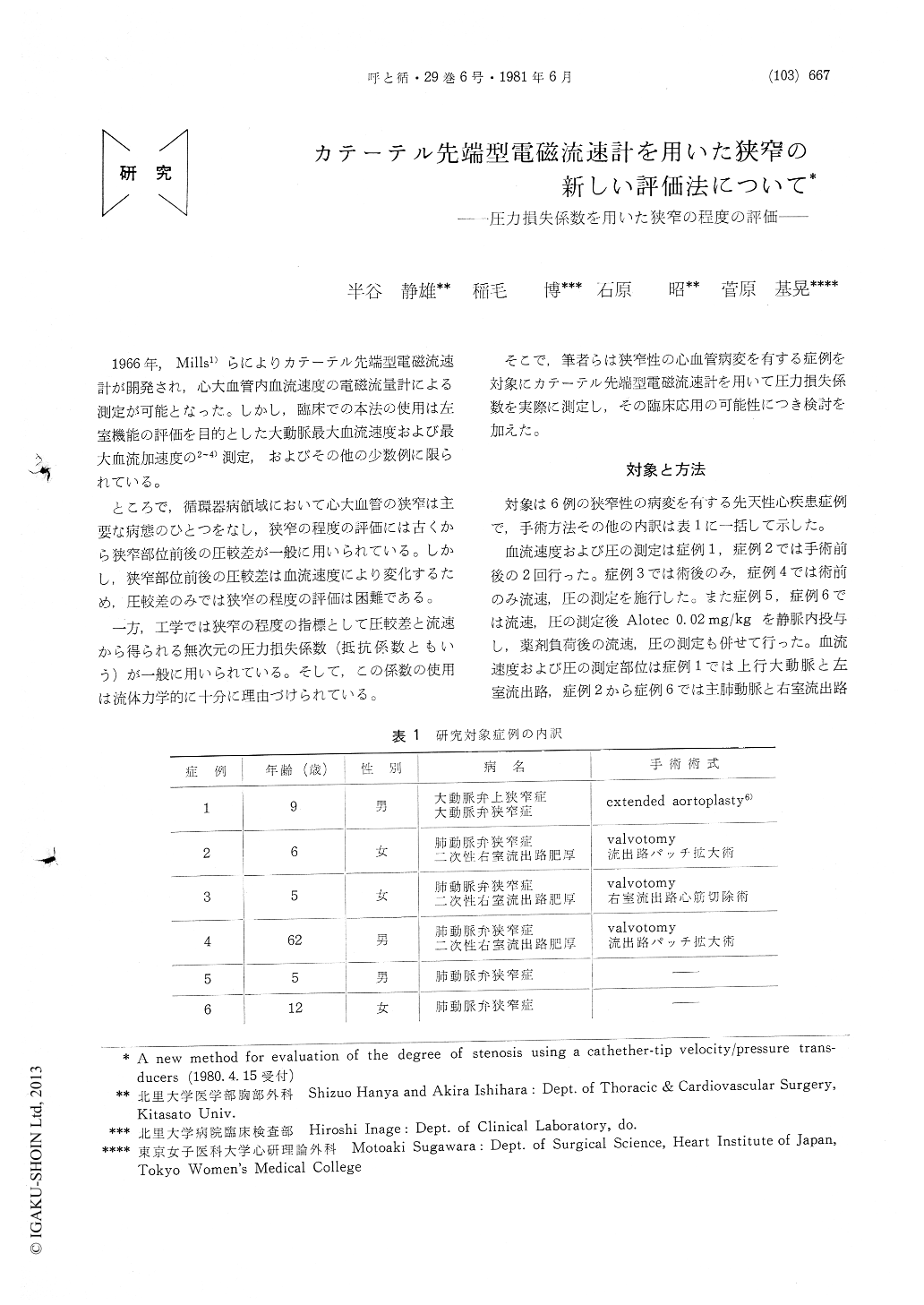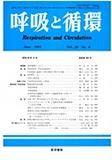Japanese
English
- 有料閲覧
- Abstract 文献概要
- 1ページ目 Look Inside
1966年,Mills1)らによりカテーテル先端型電磁流速計が開発され,心大血管内血流速度の電磁流量計による測定が可能となった。しかし,臨床での本法の使用は左室機能の評価を目的とした大動脈最大血流速度および最大血流加速度の2〜4)測定,およびその他の少数例に限られている。
ところで,循環器病領域において心大血管の狭窄は主要な病態のひとつをなし,狭窄の程度の評価には古くから狭窄部位前後の圧較差が一般に用いられている。しかし,狭窄部位前後の圧較差は血流速度により変化するため,圧較差のみでは狭窄の程度の評価は困難である。
The degree of aortic or pulmonary stenosis is conventionally evaluated by the pressure gradient across the stenosis. However, the pressure grad-ient strongly depends on the blood velocity, and consequently changes with the change of cardiac output. In the field of fluid dynamics, the commonly used index indicating the degree of resistance to flow is the pressure loss coeffic-ient,which is nearly independent of the fluid velocity when the Rynolds number of the flow is sufficiently high.
To apply the pressure loss coefficient to the evaluation of cardiovascular stenosis, it is neces-sary to measure both the pressure gradient and the blood velocity. In patients with aortic or pulmonary stenosis, the pressure and the velo-city of the blood were measured simultaneously with pressure tranceducers and an electro-magnetic velocity probe mounted near the tip of a catheter.

Copyright © 1981, Igaku-Shoin Ltd. All rights reserved.


